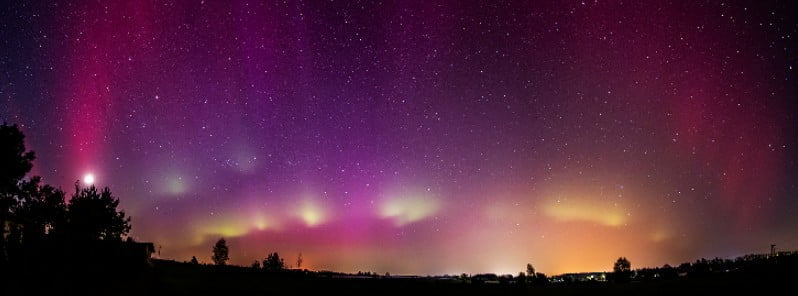Mysterious “aurora blobs” confirmed as proton auroras

On April 23, 2023, an unusual spectacle of “Aurora Blobs” baffled observers across Europe. These peculiar auroras, unlike anything seen before, have now been identified as “Proton Auroras,” originating from Earth’s ring current system, according to space physicist Toshi Nishimura of Boston University.
A celestial spectacle that took place on April 23 left Europeans and scientists alike mystified. On that night, expecting the impact of a coronal mass ejection (CME), photographers and enthusiasts were outdoors, cameras at the ready, to capture the anticipated auroras. However, the lights that danced across the sky were not ordinary auroras.
Longtime aurora watcher, Heiko Ulbricht of Saxony, Germany, shared his awe, “The auroras began to tear themselves apart, forming individual spots and blobs which rose all the way to the zenith.” This strange display, which left observers breathless and their pulses racing, was also seen in France, Poland, and Denmark, where the blobs flashed like a disco strobe light.
As space physicist Toshi Nishimura of Boston University confirmed, “These were not ordinary auroras. They are called ‘proton auroras,’ and they come from Earth’s ring current system.”
Earth, unlike Saturn, has invisible rings composed of electricity rather than ice. This donut-shaped circuit, carrying millions of amps, skims the orbits of geosynchronous satellites and significantly affects the severity of geomagnetic storms. During powerful geomagnetic storms, protons from this ring system shower down, creating a secondary shower of electrons that strike the atmosphere, resulting in these proton auroras. Notably, Earth is the only rocky planet in our Solar System to possess such a ring system.
Despite the identification of the aurora blobs as proton auroras, the mystery is not entirely solved. Nishimura states, “We still don’t know why proton auroras seem to tear themselves apart in such a dramatic way. This is a question for future research.”
However, the mystery doesn’t detract from the awe-inspiring spectacle of the proton auroras. With Solar Cycle 25 predicted to reach a potentially strong Solar Maximum next year, more geomagnetic storms are likely to release additional protons from the ring current system. Future proton auroras can be anticipated around sunset, pulsing with plasma wave activity, and often accompanied by deep red arcs of light (SARs), caused by heat leaking from the ring current system.
References:
1 Mysterious “Aurora Blobs” Identified – Space Weather Archive – May 16, 2023
Featured image: Kamila Mazurkiewicz Osiak. Captured on April 23, 2023, near Pulawy, Poland (via SpaceWeather.com)

Commenting rules and guidelines
We value the thoughts and opinions of our readers and welcome healthy discussions on our website. In order to maintain a respectful and positive community, we ask that all commenters follow these rules.